



 An old English proverb is credited for saying cars have nine lives. For three he plays, for three he strays and for where he stays. In the realm of heavy-duty diesel engines, this might be a nod to the enduring resilience of some engines, particularly the Caterpillar 3406 and C15 models. While they have been out of production for many years, their continuing popularity among owner/operators remains a solid presence in on-highway trucks, as well as on the job boards and repair schedules in rebuild shops nationwide.
An old English proverb is credited for saying cars have nine lives. For three he plays, for three he strays and for where he stays. In the realm of heavy-duty diesel engines, this might be a nod to the enduring resilience of some engines, particularly the Caterpillar 3406 and C15 models. While they have been out of production for many years, their continuing popularity among owner/operators remains a solid presence in on-highway trucks, as well as on the job boards and repair schedules in rebuild shops nationwide.
One persistent challenge with the C15 engines is the deformation of the head gasket “into the void” created by the cutouts between the cylinders of the cylinder head.
Originally the surface of these cylinder heads was flat, but some engineering genius opted to start cutting a groove between the cylinders, most likely to reduce stress in the head. However, every action has a reaction, and in this case the cutouts allow the head gasket to migrate into the voids over time. This narrow area between the cylinders is commonly where the gasket tends to foil.

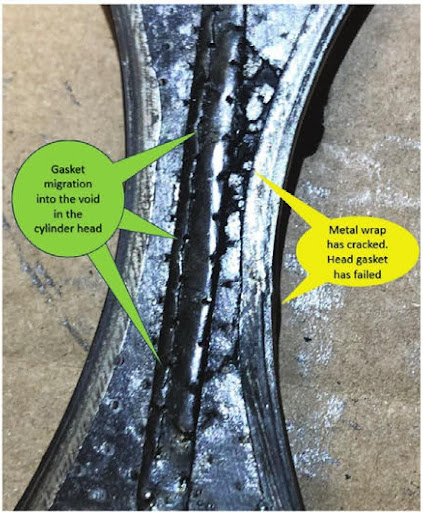 The head gasket is made up of multiple layers of graphite and metal core materials. To seal the compression, a fire by in, is encased in a metal wrap which holds the firewire in place.
The head gasket is made up of multiple layers of graphite and metal core materials. To seal the compression, a fire by in, is encased in a metal wrap which holds the firewire in place.

The composite gasket is cut so the firewire sits just inside it. Over time as the gasket migrates into the cutout voids between the cylinders, it pulls away from supporting the back of the firewire and structurally weakens the gasket.
Recognizing this issue, several independent shops and some aftermarket manufacturers have developed options to mitigate the gasket’s deformation. The use of these practices is becoming more popular.
One method is referred to as a “Firewire Cylinder Head” or “Ringed Cylinder Mead.·· By cutting a groove around each cylinder and forming a wire to fit it allows the wire to partially embed into the composite gasket. This is done to help hold the gasket in place and keep it from migrating into the voids between the cylinders of the head. A few of the aftermarket head manufacturers offer this option, but a lot of independent machine shops and rebuilders have their own methods of machining the grooves and making the fire rings.
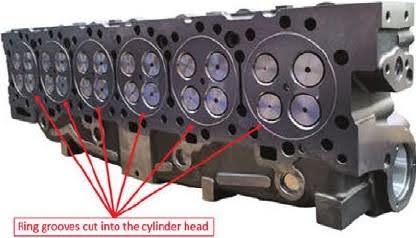
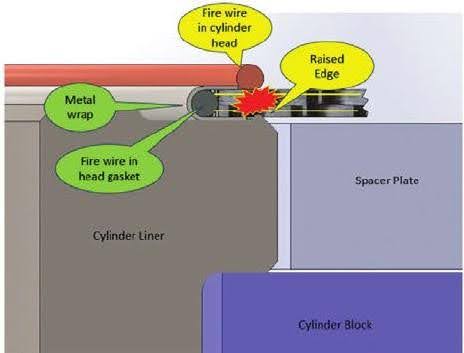
However, before committing to custom modifications or aftermarket heads, it’s essential to consider the implications for future maintenance and compatibility with other components.
Questions arise concerning the availability of replacement rings and acceptance by future vendors as a core exchange. Furthermore, the absence of industry standards for groove dimensions and wire materials adds complexity, requiring careful engineering to maintain the head gasket’s integrity. If the wire stands too proud (above) the surface of the head it could reduce the crush across the surface of the composite gasket, resulting in failures. Likewise, if the wire does not stand proud enough above the surface of the head, it serves no purpose.
Another alternative gaining traction is a raised edge liner. While not a fresh idea, Cummins used a mild version of it on the old 855 liner, and on their KT liners. This innovation offers several benefits :

The concept is to create a raised ridge on the top of the liner flange that bites into the head gasket.
For those inclined towards comprehensive solutions, caution is warranted when considering the simultaneous implementation of both ringed heads and raised edge liners. Potential conflicts between wire ring diameters and liner edge heights could jeopardize proper head seating, requiring meticulous planning and measurement. If they collide or sit on top of each other, the head will not sit correctly on the engine. Remember, the head gasket has layer of metal core, so there has to be enough room between the wire and raised edge for the gasket buyers to form between.
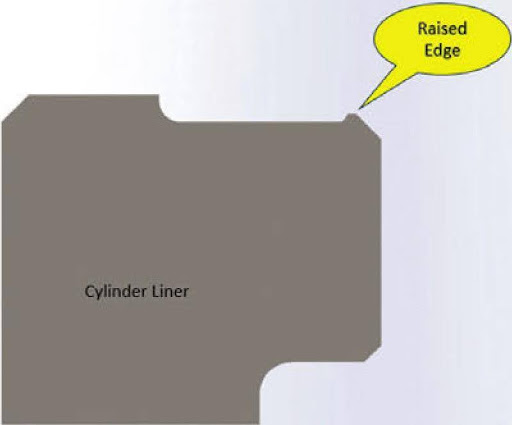
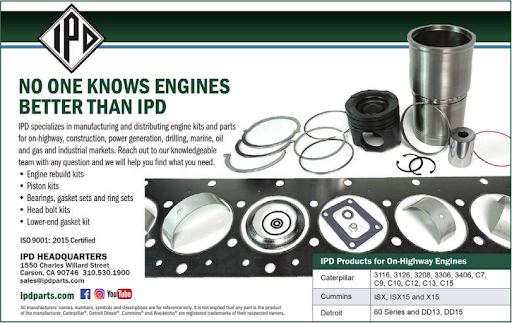
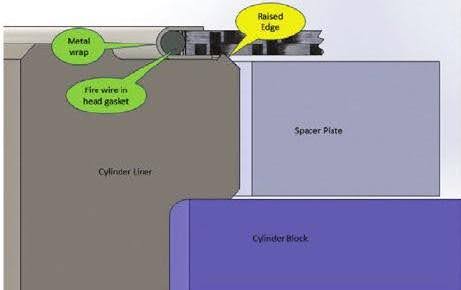

For those with the mindset that more is always better, caution is incurred when considering using a combination of both a ringed head and raised edge liner. The diameter of the wire ring and the raised edge of the liner must be compatible with each other. If they collide or sit on top of each other the head will not sit correctly on the engine. Remember, the head gasket has layers of metal core, so there has to be enough room between the wire and edge for the gasket layers to form into.
Finally, an additional option used alone or with either of the previous ideas is using one of the composite metal repair compounds to fill the cutouts (voids) in the head.

Steve Scott joined the service department at lPD in 1982, working with parts, service and sales for a variety of equipment, diesel, and natural gas engines. Since 2004, he has been the director of product development and technical support for lPD. For more information, email sscott@ipdparts.com.
If you’re an existing customer and already have a login, click here to find IPD quality parts.
If you would like to find an IPD distributor or become an IPD distributor, please fill out our form.